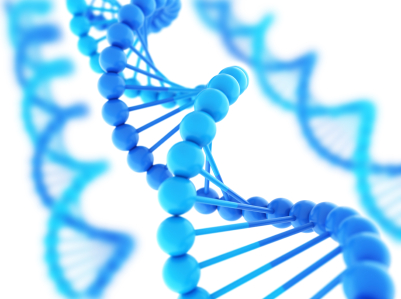Potential of Environmental Enrichment to Prevent Transgenerational Effects of Paternal Trauma
Gapp, K. et al. wrote about the “Potential of Environmental Enrichment to Prevent Transgenerational Effects of Paternal Trauma” in Neuropsychopharmacol 41, 2749–2758 (2016).
They “used a mouse model of unpredictable maternal separation combined with unpredictable maternal stress (MSUS) to examine the consequences of traumatic stress on coping behaviors in adulthood and across generations, and the potential contribution of (glucocorticoid receptors) GR. We show that MSUS affects avoidance behaviors and learning in aversive environments in exposed fathers and their male offspring. This is associated with an increase in GR expression in the hippocampus, and with decreased DNA methylation of GR promoter in the hippocampus and in germ cells. We show that transmission of the effects of paternal trauma can be prevented by paternal (environmental enrichment) EE, suggesting a reversibility of these effects.”
Editors Note: Dad’s early environmental adversity alter his response to traumatic stress as an adult, and this can be passed to the next generation via epigenetic changes in DNA methylation, histone and microRNA chemical changes persisting in sperm. If the dad with early life adversity is housed in an enriched environment, he does not have the altered response to stress or the changes in GR, and his offspring do not have the transgenerational alterations in stress responsively. This could probably happen in people if we could only figure out to super good environmental enrichment in those having early life adversity. Having lots of stress as a neonate and then being adopted out to wonderful foster family could be the basis for a naturalistic study of this sort of result.
Phthalates in Plastics and Creams Cause Epigenetic Changes to Sperm
A recent study suggests that chemicals called phthalates that are used to make plastic flexible and to improve the texture of lotions, creams, and powders have effects on human sperm. Phthalates have become common in our environment since the invention of plastics, and most people have detectable levels of phthalate metabolites in their bodies.
The study, published by Haotian Wu and colleagues in the journal Human Reproduction in 2017, measured DNA methylation in a group of men’s sperm and compared this to levels of phthalate metabolites in the men’s urine.
DNA methylation changes the structure of a DNA strand. Extra methyl groups are attached to the strand, affecting the way it is transcribed, even though the inherited genetic sequence on the DNA strand remains the same. Changes like these to the structure of DNA and histones, which give DNA its helix shape, are known as epigenetic changes.
Wu and colleagues found 131 regions of DNA methylation in the men’s sperm that they could link to at least one of the phthalate metabolites found in the men’s urine.
Sperm takes 72 days to mature. Wu and colleagues suggest that exposure to phthalates in plastics or personal care products during this period may cause alterations to sperm, which could potentially affect the ease of conception or the development of potential offspring. The changes the researchers observed affected genes related to growth, development, and cellular function and maintenance.
In addition to chemical exposure, stressors and drug use can also bring about epigenetic changes to sperm. A father’s offspring may then have altered risk of drug use or other behaviors as a result of these epigenetic changes.
Phthalates, which can disrupt the endocrine system, have previously been found to alter men’s hormone levels and to hurt sperm quality. This is the first study to find that in people, phthalate concentrations measured before conception are associated with DNA methylation in sperm. This was a fairly small study in 48 men, and it remains to be studied whether the changes to sperm affect the offspring’s prenatal and early childhood development.
In addition to their presence in flexible plastics, phthalates may also be found in products such as shaving cream, shampoo, soaps, and detergents.
Child Abuse Linked to Adolescent Obesity
 New research clarifies how trauma in early life can lead to obesity in adolescence. In a study of 160 young people between the ages of 9 and 15, researcher Janitza Montalvo-Ortiz and colleagues identified seven sites in the genome where DNA methylation predicted body mass index (BMI) in adolescence. The researchers also collected information on family traumas that occurred during the participants’ childhoods and found that DNA methylation and family trauma such as child abuse interacted to predict BMI.
New research clarifies how trauma in early life can lead to obesity in adolescence. In a study of 160 young people between the ages of 9 and 15, researcher Janitza Montalvo-Ortiz and colleagues identified seven sites in the genome where DNA methylation predicted body mass index (BMI) in adolescence. The researchers also collected information on family traumas that occurred during the participants’ childhoods and found that DNA methylation and family trauma such as child abuse interacted to predict BMI.
Epigenetics describes the ways life experiences can change how easily DNA is turned on or off. While the genes coded by DNA sequences one inherits from one’s parents never change, the structure of DNA can change. DNA methylation is one type of epigenetic change that refers to the addition of methyl groups to promoter regions of DNA in response to life events.
In this research, which was presented at the 2016 meeting of the Society of Biological Psychiatry, Montalvo-Ortiz and colleagues found that the site of DNA methylation with the strongest link to BMI in adolescence was a gene called MAP2K3. This gene had previously been linked to obesity, but this is the first time DNA methylation at this site has been linked to both obesity and childhood trauma. Other relevant gene sites where DNA methylation occurred include ANKRD2, CPXM2, NUBPL, and RFK.
Early Experiences Have Lasting Effects on DNA
It is well established that certain early experiences can affect a person’s risk of developing a mental illness. Adversity in childhood, including abuse or the loss of a parent, is a risk factor not only for diagnosis of a mood disorder, but also for a more difficult course of illness. This may occur through epigenetic means. Epigenetics refers to a process by which environmental factors can change the way that DNA is transcribed, for example through the addition of methyl groups to strands of DNA. This tends to inhibit DNA from being transcribed and producing protein growth factors and other neurochemicals that are important for development.
A study by Kieran J. O’Donnell and colleagues presented at the 2015 meeting of the Society of Biological Psychiatry investigated whether epigenetics play a role in the success of a parenting intervention called the Nurse Family Partnership. Participants were 27-year-olds born to women who had received the intervention or a control intervention. Genome-wide DNA methylation was measured in the 188 participants’ blood.
Analysis of the blood revealed that the Nurse Family Partnership intervention was associated with DNA methylation at 1015 sites across 593 genes. Some of these sites were enriched for certain neurodevelopmental processes. Maltreatment in childhood was also associated with methylation at 1552 sites across 878 genes.
Editor’s Note: The take-home message of this landmark study is that maltreatment in childhood exerts lasting effects on the genome via epigenetic mechanisms, but early positive intervention also exerts lasting epigenetic effects, which likely have a normalizing impact.
Types of Epigenetic Modifications
 We sometimes refer to epigenetics, a process by which the environment impacts not your inherited genes (based on the DNA nucleotides that encode amino acids to be sequenced in the production of proteins), but how easy it is to activate gene transcription or repress gene transcription.
We sometimes refer to epigenetics, a process by which the environment impacts not your inherited genes (based on the DNA nucleotides that encode amino acids to be sequenced in the production of proteins), but how easy it is to activate gene transcription or repress gene transcription.
There are various epigenetic modifications that can occur. Sometimes acetyl or methyl groups are added to DNA or the histones around which DNA is wound.
1. DNA Methylation (usually repressive)
2. Histone Methylation (usually repressive)
3. Histone Acetylation (usually activating)
4. DNA hydroxymethylation
5. Micro RNAs (si-mRNA) (repressing or activating)
6. Nucleosome remodeling by chromatin regulatory enzymes. If the histone spools around which DNA is wrapped are moved further apart, this is activating. If the histones are moved closer together, this is repressing.
Childhood Adversity and Epigenetic Pockmarks
 Maltreatment in childhood may have a lasting impact on health through epigenetics. Epigenetics refers to the idea that events and substances in the environment can affect the structure of DNA by adding chemicals (often methyl or acetyl groups) onto DNA and histones (structures around which DNA is wound) in such a way that the DNA is more or less likely to be transcribed and activated to produce new proteins. Thus our DNA is shaped not only by the genetic inheritance we receive from our parents, but also by events in the environment (which do not alter the sequence of DNA but can influence how easily the DNA gets turned on to produce proteins in our bodies.)
Maltreatment in childhood may have a lasting impact on health through epigenetics. Epigenetics refers to the idea that events and substances in the environment can affect the structure of DNA by adding chemicals (often methyl or acetyl groups) onto DNA and histones (structures around which DNA is wound) in such a way that the DNA is more or less likely to be transcribed and activated to produce new proteins. Thus our DNA is shaped not only by the genetic inheritance we receive from our parents, but also by events in the environment (which do not alter the sequence of DNA but can influence how easily the DNA gets turned on to produce proteins in our bodies.)
A 2013 study by Divya Mehta et al. published in the Proceedings of the National Academy of Sciences analyzed the childhood backgrounds of adult patients with PTSD and found that patients’ profiles of disease-related gene expression and DNA methylation in blood differed greatly depending on whether or not they had experienced abuse in childhood. Adults who had been abused as children were about twice as likely to show patterns of DNA methylation accompanying their PTSD-related changes in gene expression.
The implication of this research is that childhood trauma can leave a kind of epigenetic pockmark on a person’s DNA, affecting the way the DNA produces proteins, potentially for the rest of that person’s life.
Rats Exposed to Jet Fuel Pass Epigenetic Changes on to Third Generation
A recent study of rats showed that exposure to hydrocarbons (jet fuel JP-8) can bring about disease not just in the rats who were exposed, but also in subsequent generations. Epigenetics is the study of how environmental events or biochemical changes can affect the structure of DNA, e.g. by attaching extra methyl groups. (These kinds of “epimutations” are separate from the inherited genetic makeup we receive from our parents, but new evidence suggests that some can be passed on to future generations.)
When first generation female rats were exposed to jet fuel, third generation rats showed 33 different examples of DNA methylation as well as obesity.
Previous research has shown similar signs of transgenerational transmission of disease resulting from first generation exposure to chemicals such as bisphenol A, phthalates, dioxins, and pesticide mixtures.
Depression Associated with Increased DNA Methylation
Epigenetics is an emerging field where researchers are studying the ways environmental events and biochemical changes can affect the structure of DNA. Chemicals such as methyl groups can accumulate on DNA (a process called methylation), which usually results in suppression of genes in that area. DNA is tightly wound around proteins called histones, which can also be methylated or acetylated (when acetyl groups accumulate) based on events in the environment, including stressors and drug use. The environmental events do not change the genetic inheritance people receive from their parents, but instead change the ease with which genes are transcribed (or switched on).
At the 2012 meeting of the Society of Biological Psychiatry, Dr. Yurong Xin et al. presented an abstract that indicates that depressed patients may have much more DNA methylation at CpG sites on genes. CpG sites occur in many genes and refer to a place where a cytosine and a guanine (two of the four building blocks of DNA) sit next to each other on the same strand of DNA (the ‘p’ refers to the chemical bond between the two). CpG sites can become methylated. Xin and colleagues measured 27,578 CpG sites across 14,000 genes in the human genome. They found an eightfold increase in DNA methylation at these CpG sites in depressed patients compared to controls.
Editor’s Note: Previous research has found that early life experiences like psychosocial stress can lead to epigenetic changes. The new findings by Dr. Xin indicate that DNA methylation may occur and accumulate across the lifespan and suggests that DNA methylation may be associated with the emergence and progression of depression. Future treatments for depression could target this DNA hypermethylation, but determining how to do that selectively without affecting normal functioning may be a challenge.





